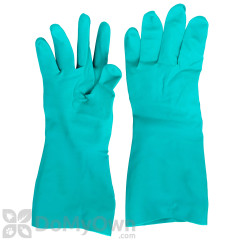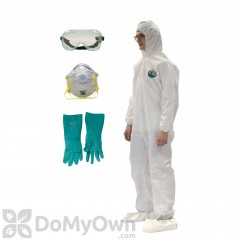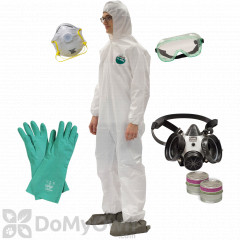What are Pyrethroids?
Pyrethroids are synthetic insecticides that share some similarities with natural pyrethrins. There are more than 1,000 different pyrethroids in use today, though less than a dozen are available in the United States. Pyrethroids can be found in many types of products such as pet sprays, pet shampoos, human head lice treatments, topical mosquito repellents and of course insecticide sprays for homes, farms, and businesses.
How do synthetic pyrethroids work?
Pyrethroids work by disrupting an insect's nervous system causing a weakened state followed by death.
Are some insects resistant to the effects of pyrethroid insecticides?
Some insects have developed the ability to produce an enzyme that allows them to resist the insecticide. Most pyrethroids now contain a synergizing agent such as piperonyl butoxide that prevents insects from producing the enzyme that allows them to be insecticide resistant.
Where can pyrethroids be used?
Pyrethroids are a good choice for treating most insects that infest homes, businesses, gardens and farms. Pyrethroids are not a good choice for leaf infesting insects or insects that bore into tree trunks. This type of situation calls for soil injections or soil drenches and pyrethroids bind readily with the soil and cannot be absorbed by the roots of the trees or shrubs.
What types of insects will be killed by pyrethroids?
Pyrethroids are broad spectrum insecticides and most insects that come in contact with either the wet spray or the dry deposit of the active ingredient left by the spray will be eliminated. This includes ants, roaches, spiders, stinging insects, pantry pests, bed bugs, as well as insects that we consider to be beneficial such as lady bugs and honey bees.
What is the difference between pyrethroids and pyrethrins?
Pyrethrins, also called pyrethrum, are produced from the oil of the chrysanthemum flower from Kenya, Africa. Due to frequent shortages of the essential oil needed to create the natural organic pyrethrum, scientists produced synthetic pyrethroids. Originally pyrethroids were made to synthetically mimic pyrethrins. Over the years and as industry needs changed scientists were able to produce the pyrethroid with more complicated molecules, making the synthetic insecticide more potent. Today's pyrethroids have very low or no odor at all, they last longer, can be used in lower concentrations, they are manufactured with out petroleum by-products, they have a low order of toxicity in mammals and are available in varying formulations. Pyrethrins, while they have pretty much stayed the same over the years, still have their place in pest control. Pyrethrins can be used in environments where a long lasting residual is not desired or where natural, organic pesticides or insecticides are needed.
What pyrethroid product should I choose?
Pyrethroids are available in many formulations. They are sold as wettable powders, emulsifiable concentrates, granules, dusts, aerosols, microencapsulates, flowables and tablets.


